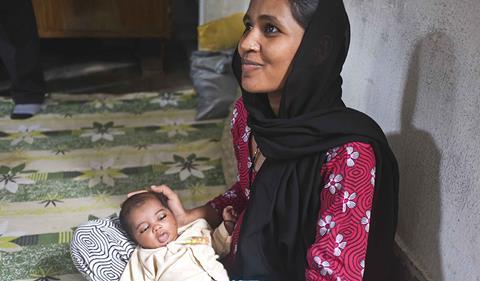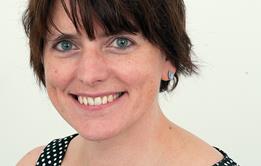In the fourth Lessons from India article, Hilary Chapman examines the role of staff and ownership of engagement

A mother and child, receiving support as part of the LifeSpring community outreach programme, Hyderabad
My take-aways from our trip to India were topped by the use and ownership of information. Staff understood their suite of indicators.
The provision of data to clinicians was the closest to real time I have ever seen – at Narayana Health leaders received their profit and loss status daily.
But even more impressive was rapidity with which actions were taken. Their view was that to look at the data after the event is like doing a post-mortem: too late.
‘Staff engagement, from the senior leaders to the trained volunteers who were part of maternity services at LifeSpring was impressive’
Staff engagement, from the senior leaders to the trained volunteers who were part of maternity services at LifeSpring was impressive. They were driven by opportunities to improve healthcare but also talked about how investment in training made them feel valued.
Many of those we met were living evidence that commercial nous and social purpose are not mutually exclusive.
Nursing spectrum
The role of nurses ranged from a traditional medical model to that of a specialist with a sophisticated skills transfer. I had anticipated the family delivering a significant proportion of care but this was not the case.
Nurses delivered most of the care and the patient’s family were welcomed only at visiting times.
At Narayana Health, families were educated and formally examined in the ongoing care of their relative following discharge, optimising capacity and facilitating early discharge.
Pay per view
Last was the offer of tiered amenities within the same organisation as a means of cross-subsidisation. We are uncomfortable with this concept, yet each of the organisations we visited viewed it as a legitimate way to enable access to care for more of the population.
‘Differential payment enabled patients to choose different levels of infrastructure’
Differential payment enabled patients to choose different levels of infrastructure, whilst the quality and uniformity of the clinical service is maintained.
Like flying, they told us, you can turn left or right when you board but the pilot and levels of safety are the same.
Hilary Chapman is chief nurse at Sheffield Teaching Hospitals Foundation Trust. Photos by John Illingworth, policy manager at the Health Foundation
Lessons from India: how to improve care with limited resources

First dispatch from senior NHS leaders’ research trip
- 1
- 2
- 3
 Currently
reading
Currently
reading
Lessons from India: using patient data in real time
- 5

































No comments yet